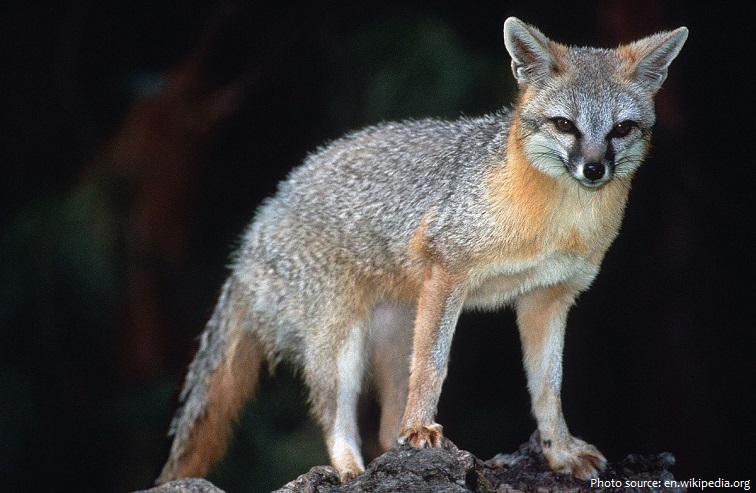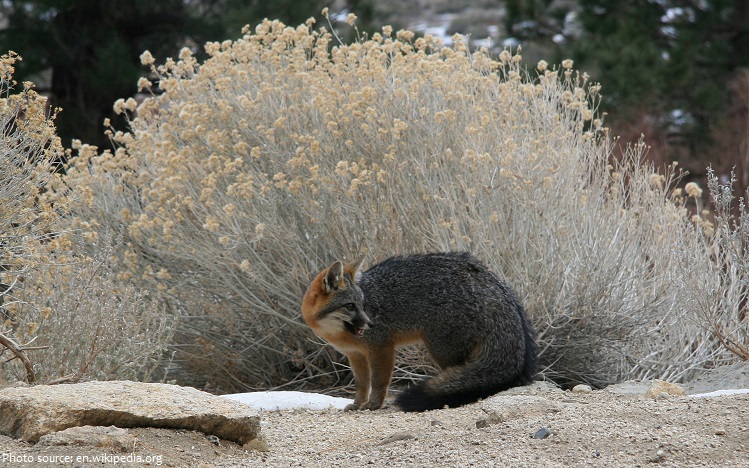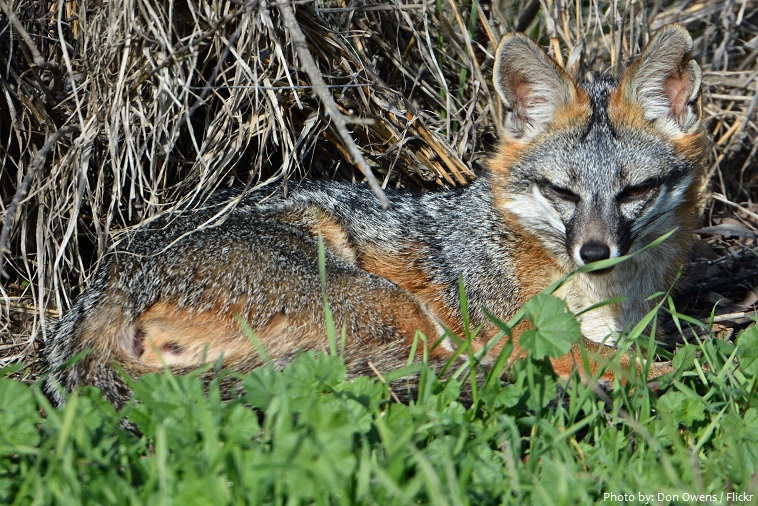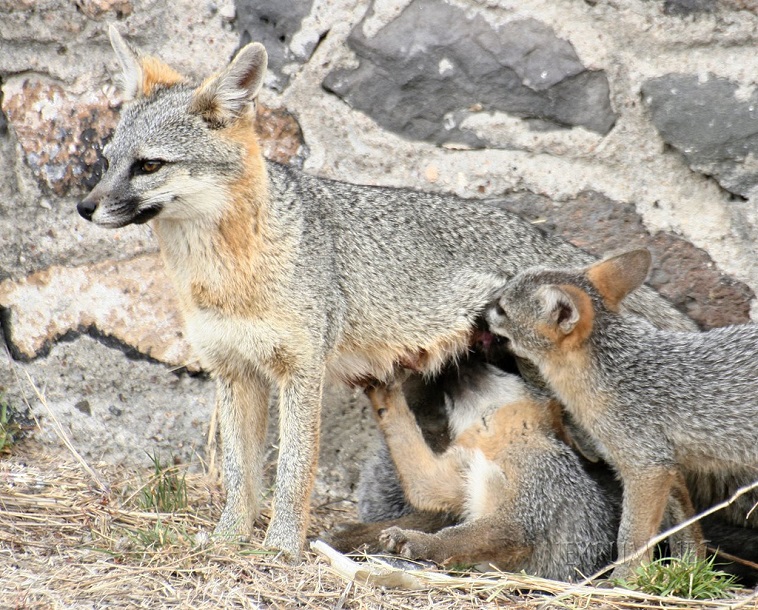The gray fox (Urocyon cinereoargenteus), or grey fox is a mammal of the order Carnivora.
This species is widespread throughout North America and Central America. More specifically, their range spans from southern Canada to Venezuela and Columbia, excluding portions of the Great Plains and mountainous regions of northwestern United States and eastern coast of Central America.
Gray foxes prefer to live in deciduous forests interspersed with brushy, woodland areas. Many populations thrive where woodlands and farmlands meet. Proximity to water is a key feature of preferred habitat as well.
They are most often found below 3,000 meters (about 10,000 feet) in elevation.
The lifespan of the gray fox is 6 to 9 years in the wild and up to 12 years in captivity.
The gray fox is medium-sized canids with elongated bodie and relatively short legs.
The gray fox ranges from 76 to 112.5 cm (29.9 to 44.3 in) in total length.
The tail measures 27.5 to 44.3 cm (10.8 to 17.4 in) of that length and its hind feet measure 10 to 15 cm (3.9 to 5.9 in).
The gray fox typically weighs 3.6 to 7 kg (7.9 to 15.4 lb), though exceptionally can weigh as much as 9 kg (20 lb).
It is readily differentiated from the red fox by the lack of “black stockings” that stand out on the latter and the stripe of black hair that runs along the middle of the tail as well as individual guard hairs being banded with white, gray, and black.
Gray foxes are omnivorous. A large part of its diet is made up of small mammals like mice, voles and eastern cottontail rabbits. It also eats birds, insects, and plants like corn, apples, nuts, berries and grass. In the summer and autumn, grasshoppers and crickets are an important part of its diet.
The gray fox is primarily nocturnal or crepuscular and makes its den in hollow trees, stumps or appropriated burrows during the day.
Grey foxes will use their long claws to dig a den or they will find another small mammal’s abandoned underground burrow to live in. It is more common, though, for their dens to be located in hollow trees or logs, rock piles, crevices between and under cliffs, and even in the lower forest canopy.
Gray foxes are solitary animals that socialize only during mating season. They are typically monogamous, although in rare cases polygamy and polyandry occur.
For a short period of time after parturition, family groups consisting of male, female, and young exist.
Breeding season varies with geographic region, elevation, and habitat quality. Breeding occurs in yearly cycles, beginning in January through late February, continuing into March. The gestation period lasts approximately 53 days. Litter size ranges from 1 to 7, with a mean of 3.8 young per female. Pups depend on their parents for defense until about 10 months old.
Gray foxes primary predators include bobcats, golden eagles, great-horned owls and coyotes.
Gray foxes are the only member of the Canidae family that can climb trees.




